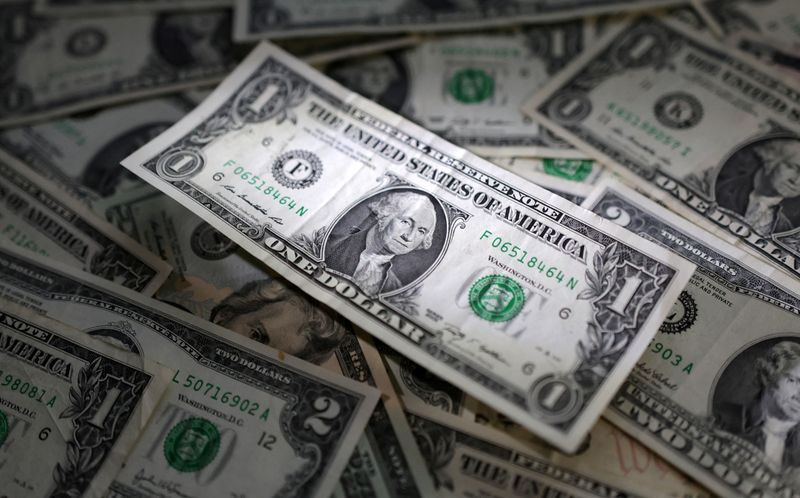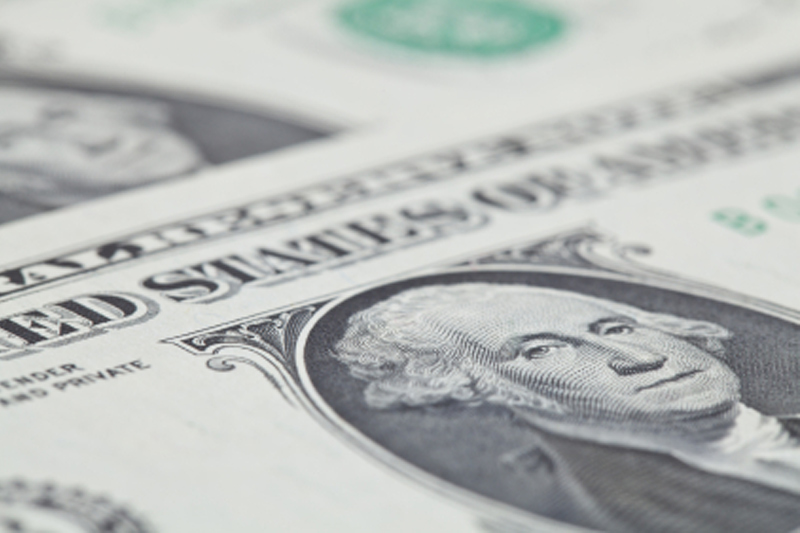By Samuel Indyk and Wayne Cole
LONDON (Reuters) -The U.S. dollar partially recovered on Tuesday after President Donald Trump suggested the U.S. could impose tariffs on Canada and Mexico before Feb. 1, challenging suggestions that his trade policy could be more gradual.
Trump told reporters his team was considering tariffs around 25%, but gave no other details. He also raised the idea of universal tariffs, but said the US is not ready for that yet.
The dollar fell sharply on Monday after Trump failed to lay out specific tariff plans on his first day in office and officials signaled that any new taxes would be imposed in a “measured” manner, providing a major boost to trade-exposed currencies.
A subsequent trade memo merely directed agencies to investigate and address persistent trade deficits.
“Just because nothing specific has been announced, there is clearly a threat of tariffs coming and they could be quite significant,” said Dominic Bunning, head of G10 FX strategy at Nomura.
“Some of the threat in terms of the speed and magnitude of tariffs being implemented quickly has diminished, but I think the market is still wary.”
The market reaction was a sudden drop in the Canadian dollar and the Mexican peso and a jump in the dollar. The U.S. currency rose 0.9% to 1.4442 Canadian dollars and strengthened 1.1% against the Mexican peso.
The , which measures the currency against six major currencies, rose more than 0.6% to 108.68 after losing 1.2% on Monday in what was the sharpest single-day decline since late 2023.
VOLATILE TIMES
The euro fell back to $1.0353 after an early top of $1.0434. The EU has a significant trade surplus with the United States and is seen as a prime target for Trump’s tariffs.
Speaking to reporters on Monday, Trump said he would address the trade imbalance either through tariffs or by having Europe buy more American oil and gas.
“The first few hours of the Trump administration have underlined that the policy environment will once again be dynamic and that markets should brace for volatility,” said Charu Chanana, chief investment strategist at Saxo in Singapore.
“It’s clear that markets celebrated too early, with tariff threats missing from Trump’s inaugural address from the start.”
The inauguration speech focused on immigration and energy emergencies and a more expansionist foreign policy, including a pledge to take back the Panama Canal.
During his first term, Trump had a history of announcing impending plans for policy proposals, including on health care and infrastructure, without anything materializing.
Against the yen, the dollar changed little at 155.77.
The yen still has some room to outperform, Nomura’s Bunning said, adding that Japan is likely to be less directly affected by tariffs than many other countries.
The yen has also been supported recently by growing expectations that the Bank of Japan would raise interest rates next Friday following comments from policymakers last week.
The markets estimate an 86% chance of a quarter-point increase.
The dollar rose 0.3% against the offshore Chinese yuan to 7.2872. Trump has previously threatened China with tariffs of up to 60%, but was vague about his plans on Monday.

Beijing later set a stronger fix for the yuan, indicating the country is still inclined not to let the currency fall too quickly.
They ended the domestic session at 7.2798 per dollar, the strongest close since December 13.


